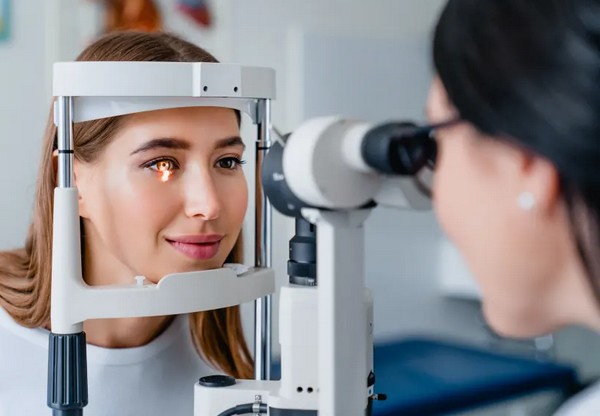If you experience issues with your eyes or vision, you might want to reach out to an eye doctor at the earliest opportunity. Even though some symptoms are more emergent than others, it’s better to avoid taking the risk when it comes to your eye health. Any kind of discomfort and pain can decrease your ability to see, and sometimes it may indicate a serious underlying problem like an infection or visual-impairing disease. Nearly 3.5 million Americans that are middle-aged or older are blind or visually impaired, so it’s best not to ignore your symptoms.

Here are some signs that indicate you may need to schedule an appointment with an eye doctor.
1. Trouble seeing at night or while driving
Driving at night makes it harder to see something in the dark or long-distance, so if your eyes start to struggle more, it is a clear sign that your vision starts to drop off. Sometimes your eyesight can benefit from a simple solution like a new glasses prescription. However, in some cases, difficulty seeing at night indicates a serious problem like a cataract that’s starting to form. An eye doctor can evaluate your night vision and create the best action plan.
2. Red or pink eyes
Pink or red in the eyes can be highly dangerous and very complicated, as it’s linked to a wide range of conditions including allergies, conjunctivitis, and even rare forms of glaucoma. These conditions may result from an inflamed thin layer of clear tissue that covers the front of your eyes and the inside of your eyelids. Or they may be caused by the pressure accumulated inside your eyes. You might want to consult your primary care doctor first, but if you still experience pink or red eyes after 2 to 3 days, it’s essential to give an eye doctor a call. Some issues may be more complex than your primary care specialist can identify.
3. Light sensitivity
This issue is typically linked to some type of information in the eye. Light sensitivity may develop due to problems with your cornea, a protective outer layer that covers your iris and pupil, or it may go deeper inside the eye. Regardless of the cause, it should be addressed ASAP, as some conditions that result in light sensitivity may lead to permanent scarring.
4. Blurred vision or inability to focus on near objects
There may be various reasons why you experience these sudden changes in your vision, so an ophthalmologist must do a complete exam to identify the proper cause. A specialist may prescribe medications, eye drops, or even recommend surgery to treat the problem.
5. Eye pain
If your eyes are painful, avoid waiting until they get better. Pain in your eyes is never normal. For instance, acute angle-closure glaucoma typically leads to intense pain and can even make you go blind within a few days. This is a rare glaucoma type that’s considered a medical emergency and also causes things like blurred vision, nausea, and throwing up. More common reasons for eye pain are infections, irritation due to a foreign body, corneal abrasion, dryness, allergies, headaches, or inflammation for numerous reasons. So even if your eye pain is mild, it’s best to schedule an appointment with an eye doctor to determine the proper cause and start appropriate treatment.
6. Frequent headaches
Numerous things can lead to headaches, but eye health is among the main contributors. You may have an eye strain or require a new glasses prescription, or maybe the cause is more serious like the misalignment of the eyes. If you suffer from frequent headaches, an eye doctor is a perfect first step in figuring out what’s causing it.






